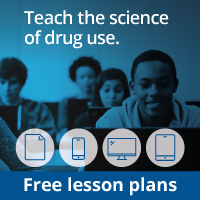
Contributed by Staff of Timberline Knolls
Peer pressure has been an active force in the American culture for many, many decades. Essentially, peer pressure is the strategy by which any group influences its members, particularly in the case of substance abuse. Those on the receiving end, often eventually change their behavior to conform to the group.
Unfortunately, a group rarely pressures its members to change in a positive fashion. You wouldn’t often find a group of teens pressuring others to say get better grades or engage in a philanthropic project.
By and large, the desired change is negative; it could involve anything from smoking cigarettes to taking opioids.
Adolescents, primarily female, are most likely to fall victim to peer pressure; this is the result of myriad factors. Perhaps the greatest issue is the vast value placed on popularity with the commensurate fear of rejection and possible isolation.
For a teenage girl, social ostracism is literally a fate worse than death. Drinking, taking drugs or other forms of substance abuse seems a small price to remain part of the group.
Influence of Peers & Substance Abuse
The importance of the peer connection is not just social--it is physiological. A study registered brain activity in teens while they were driving. It found that having a peer audience turned on the reward system area of the brain, and thus, increased risky behavior.
Although the end goal of peer pressure—revised behavior—has never changed, the method of applying pressure has definitely altered. Two words: social media.
 Today’s adults are the Facebook generation; conversely, adolescents are the Instagram and snap chat generation. Millions of photos are sent through cyberspace every minute.
Today’s adults are the Facebook generation; conversely, adolescents are the Instagram and snap chat generation. Millions of photos are sent through cyberspace every minute.
These photos often depict drinking beer, doing shots, smoking weed—any number of unhealthy, and often illegal activities under the guise of “partying". And everyone is having so much fun; in the teen’s subconscious mind, the drink or drug is inextricably linked with incredible enjoyment.
Understanding Digital Peer Pressure & Substance Abuse
This phenomenon is known as Digital peer pressure. A survey conducted by The National Center on Addiction and Substance Abuse (CASA) at Columbia University revealed:
- 75% of teens said seeing pictures of teens partying with alcohol or marijuana on social networking sites encouraged them to do the same.
- 47% said they have seen party promoting pictures online that seemed like the kids were having a good time.
- Teens who saw images of partying were four times more likely to have used marijuana and more than three times more likely to have used alcohol
- Historically, Adolescents viewed drinking alcohol as somewhat of a “rite of passage “This concept is often validated in movies and television shows that depict teens getting “wasted.” But now, this particular rite is often expanded to include smoking marijuana and taking pills, which leads us to another societal phenomenon.
The Beginnings of Substance Abuse
This is the highly normalized behavior of taking pharmaceutical medications. Young people, not unlike adults, erroneously believe that if a drug is prescribed by a doctor, it is automatically safe. They are wrong, especially when taken with alcohol or other drugs.
 Today, pills are ubiquitous, frequently prescribed to family members with a host of refills. Young people know the next high is easily found in the parents’ medicine cabinet.
Today, pills are ubiquitous, frequently prescribed to family members with a host of refills. Young people know the next high is easily found in the parents’ medicine cabinet.
Another added benefit of pills is their economy of size. Whereas there is no hiding a fifth of vodka in a purse while at school, a bottle of pills is easily tucked away in a pocket.
We know that teenage drug experimentation can easily lead to lifelong substance abuse and addiction. As with anything else, if a particular behavior is rewarding, the possibility of repetition is high. And availability remains strong.
- Alcohol Substance Abuse Knowledge base reports around 30% of teens are offered drugs in middle school and high school
- According to the National Household Survey on Drug Use and Health from the US Department of Health and Human Services, 74.3% of high school students have tried alcohol
No adolescent lives in a vacuum; therefore, drugs and alcohol will always be an aspect of the teenage experience. If you, or someone you know, has a problem with addiction, please get help.
Sources:
Jaslow, Ryan. “Survey: “Digital Peer Pressure” Fueling Drug, Alcohol Use in High School Students – CBS News.” CBS News – Breaking News, U.S., World, Business, Entertainment & Video. CBS Interactive Inc, 22 Aug. 2012. Web. 11 Feb. 2016.
http://www.cbsnews.com/news/survey-digital-peer-pressure-fueling-drug-alcohol-use-in-high-school-students/
Bayindir, N., & Kavanagh, D. (2018). GlobalWebIndex’s flagship report on the latest trends in social media (Rep.). Retrieved June 23, 2019, from https://www.globalwebindex.com/hubfs/Downloads/Social-H2-2018-report.pdf
Thank you to Timberline Knolls for providing this article.
Timberline Knolls is a leading residential treatment center for women and adolescent girls, ages 12 and older, with eating disorders, substance abuse, trauma, mood and co-occurring disorders. Located in suburban Chicago, residents receive excellent clinical care from a highly trained professional staff on a picturesque 43-acre wooded campus. An adult partial hospitalization program (PHP) is also available in nearby Orland Park, Ill., for women to step down or direct admit. For more information on Timberline Knolls Residential Treatment Center, call 630-755-5173. We are also on Facebook – Timberline Knolls, LinkedIn – Timberline Knolls and Twitter – @TimberlineToday.
The opinions and views of our guest contributors are shared to provide a broad perspective of addictions. These are not necessarily the views of Addiction Hope, but an effort to offer a discussion of various issues by different concerned individuals.
We at Addiction Hope understand that addictions result from multiple physical, emotional, environmental, and genetic factors. If you or a loved one are suffering from an addiction, please know that there is hope for you, and seek immediate professional help.
Published on June 23, 2019
Reviewed and Updated by Jacquelyn Ekern, MS, LPC on January 12, 2021
Published on AddictionHope.com

